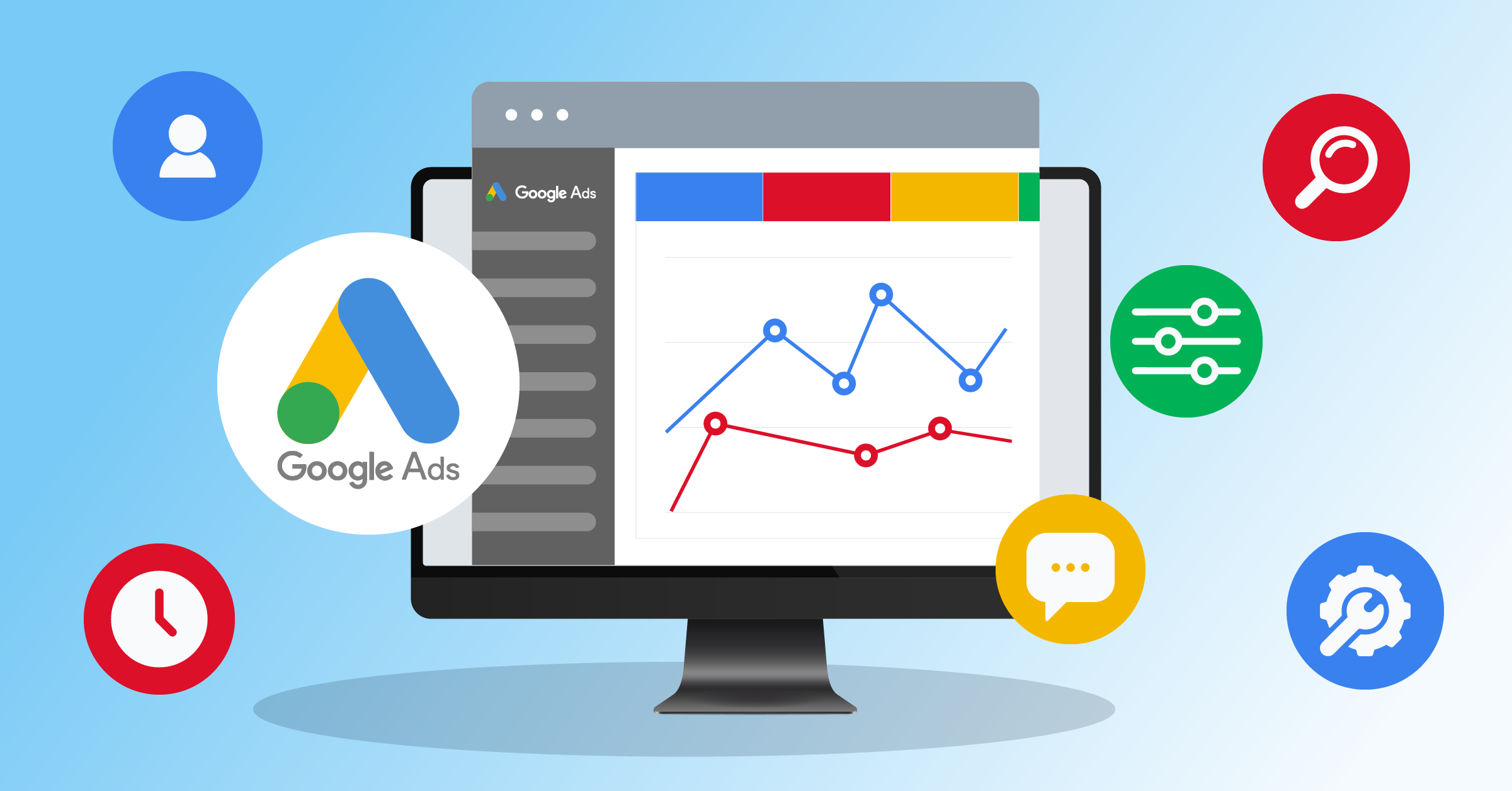
When it comes to pay-per-click (PPC) advertising with Google Ads, many factors determine the success of your campaigns. One of them is your Google Ads campaign structure.
A well-designed structure ensures your ad shows up in front of the right audience at the right time.
This leads to a better Quality Score, better results, and better prices.
When you carefully organize campaigns, ad groups, ads, keywords, and targeting methods, you can unlock the true potential of your campaign efforts.
This article discusses how to build a solid foundation for Google Ads campaign success, and how to automate your data management using integrations such as:
Why is a good Google Ads campaign structure important?
Google Ads is essentially organized into three layers, which are accounts, campaigns, and ad groups.
Then, each ad group contains a set of similar keywords and ads.
Let’s look at these elements in more detail.
- Account: This is the first level of your Google Ads campaign structure and includes all the information about your business and PPC ads. It includes your account name, time zone, billing information, language, etc.
- Campaigns: A campaign is a container for ad groups and ads, usually tied to a specific goal or budget. You can run many different campaigns on Google Ads, including Search, Display, Video, Shopping, Discovery, and Performance Max campaigns.
- Ad groups: An ad group is a set of ads with similar goals.
- Keywords: Keywords help Google display your ads in the search engine results pages (SERPs).
- Ads: Your ad is the final product of your campaign. Your customers will see it when they type in a specific search query.
To better understand the Google Ads account structure, let’s look at this ad example by Uber Eats.

At the campaign level, it’s one brand-awareness campaign: “Tonight I’ll be eating” around football and cultural moments.
How you organize your campaigns will help Google better understand the themes in your account, so it shows them to the right audience. The more relevant your ads are to searchers, the higher their chance of clicking through.
Being a good fit also affects your Quality Score, which depends on your expected click-through rate, ad relevance, and landing page experience.
A higher Quality Score means you’re paying less for the keywords your competitors’ ads also compete for.
Types of Google Ad campaigns
Google Ads gives you a set of core campaign types, each with its own formats, placements, and strengths.
If you understand what each one is actually built to do, you can design a structure that fits your goals (leads, sales, store visits, awareness) instead of cramming everything into one generic campaign.
Here’s a quick view of the main types you’ll use in most accounts:
- Search campaigns: text ads on Google search results triggered by keywords.
Display campaigns: image/visual ads across websites, apps, and the Google Display Network. - Shopping campaigns: product listings with image, price, and merchant info in Search and Shopping.
- Video campaigns: video ads on YouTube and video partner sites.
- App campaigns: automated campaigns to drive app installs and in-app actions across Google surfaces.
- Local campaigns: ads designed to drive store visits, calls, and local actions for physical locations.
- Performance Max campaigns: goal-based, AI-driven campaigns running across all Google channels.
- Discovery campaigns: visual, feed-style ads on YouTube, Discover, and Gmail.
- Smart campaigns: simplified, mostly automated campaigns aimed at smaller or less hands-on advertisers.
How to structure Google Ads campaigns
Here’s an overview of how to create your Google Ads account and set up your first ad campaign, with a focus on Search campaigns.
1. Set up your account the right way
- Sign in to Google Ads and create your account.
- Choose your time zone and currency carefully. You basically can’t change these later.
- Add your billing info so your ads can actually run.
- Turn on auto-tagging in the account settings. This helps track your clicks and results in tools like Google Analytics.
- Install the Google tag on your website and set up conversion tracking (for things like leads, purchases, sign-ups, or calls).
- Connect Google Ads to Google Analytics 4 (GA4) if you use it.
Smart bidding needs real conversion data to work, so don’t skip conversion tracking.
2. Plan a simple campaign structure
Don’t start with keywords. Start with your primary business goals, like getting online sales, or more local visits or calls.
Then build as few campaigns as you reasonably can. Only split into separate campaigns when it really matters, for example:
- Different goals (sales vs leads vs brand awareness)
- Different countries or languages
- Very different product lines
Avoid making separate campaigns just for device (mobile vs desktop) or match type (broad vs exact). That’s very old-school and could hurt your ad performance currently.
When you create each campaign:
- Choose Search (or the updated search campaign type in your account).
- Pick a Smart Bidding strategy, like Maximize conversions or Maximize conversion value (You can add a target CPA or ROAS later once you have some data.)
- Set your daily budget at the campaign level.
- Choose your targeted locations and languages.
- Add any audience segments (remarketing lists, in-market audiences, etc.) to help the system learn faster.
3. Create focused ad groups
Inside each campaign, you’ll have ad groups. Each ad group should be about one main theme, for example:
- One product
- One service
- One very specific intent (like “emergency plumber” vs “bathroom remodel”)
Keep it simple and create fewer, stronger ad groups with enough traffic so Google’s AI can learn.
4. Choose your keywords (without going crazy)
Keywords tell Google what kind of searches you want.
For each ad group:
- Start with 5 to 15 related keywords that match the same intent.
- Use broad match as your default if you’re using Smart Bidding. Broad match lets Google show your ads on more relevant searches, not just the exact wording.
- Use phrase or exact match when you need very tight control (e.g., for brand keywords or legal terms).
Also, use negative keywords to block bad searches (for example, “free”, “jobs”, or unrelated topics).
Then, check your search terms report regularly to add both good search terms as new keywords and bad ones as negative keywords.
5. Write strong ads and pick the right landing page
For Search, use Responsive Search Ads (RSAs). In each ad group, create at least one strong RSA:
- Add 8–10 different headlines (you can go up to 15).
- Add up to 4 different descriptions.
- Make each line meaningfully different, not tiny rewrites.
Make sure to include what you offer, why you’re better (benefits, proof, guarantees, reviews), and a clear call-to-action. To speed up this process and test more variations efficiently, many advertisers use an ad creative generator to quickly produce multiple headline and description combinations tailored to each ad group.
Google will mix and match your headlines and descriptions and try to find the best combos.
Also, choose a landing page that actually matches the ad group’s topic. If the ad is about “running shoes,” don’t send people to your generic homepage.
Your ad assets (extensions) at the campaign or account level are:
- Sitelinks (extra links to key pages)
- Callouts (short selling points)
- Structured snippets (lists like “Brands: …”)
- Image, call, and location assets if they make sense
6. Launch and improve your Google Ad structure over time
Once your campaigns go live, give the system some time and data to learn. And that’s how Smart Bidding works.
What you need to watch for is:
- Conversions and cost per conversion
- Conversion value and ROAS (for ecommerce)
- Search terms quality
Always pause or merge weak ad groups with almost no traffic. And merge small campaigns if they have the same goal, locations, and similar keywords.
Test new headlines, descriptions, and landing pages, but don’t rebuild the whole structure every week.
Modern Google Ads is less about micromanaging every bid and more about:
- Clear goals
- Simple structure
- Good conversion data
Strong, relevant ads and landing pages
If you get those pieces right, you’re building for where the platform is going, not where it used to be.
Top Google Ads campaign structure best practices
Follow these Google Ads campaign structure best practices to optimize your PPC success.
1. Optimize each component of your Google Ads campaign structure
Follow these tips to ensure each component of your campaign structure is well-optimized.
Account
Use “Expert Mode” to get more advanced settings for choosing your target audience, managing your budget, and bidding.
Campaign
Choose your campaign type (e.g., search, performance max, display, shopping, video, discovery, etc.). Optimize your campaigns based on your target audience’s location.
Ad groups
Choose a specific theme for each ad group and create relevant ads around that theme. Create multiple ad groups within each campaign. Then, create a few ads for each ad group.
Keywords
Using a keyword research tool like Google Keyword Planner, choose the right keywords based on your industry or product/service.
For example, when creating an ad for a travel tour agency specializing in Normandy beach tours, they should focus on keywords such as “World War II tours” and “D-Day tours” to precisely target their audience interested in historical tours of Normandy.

A list of 5 to 15 keywords for each ad group is a good rule of thumb. Consider the three different keyword match types: broad match, phrase match, and exact match. And you don’t have to choose just one.
Choosing a mix of all three can give you the best of both worlds, enabling you to reach a wider audience while still taking advantage of precise targeting.
Ads
Include at least one keyword from the ad group in the headline of your ad. Make sure to use a clear CTA and a relevant landing page.
2. Make sure your campaign structure supports your goals
Your goals will influence the structure of your Google Ads campaign. So, consider having separate campaigns based on each advertising goal.
You can also organize your ad campaigns based on sales funnel stages, conversion action types, product/service types, or geographic targets.
If you want to overcome language barriers, you can consider language targeting and translate your Google Ads.
3. Give some thoughts to your campaign names
Name your campaigns and ad groups so that everyone on your team can immediately understand their goal and purpose.
Try to be as specific as possible by including segmentation details in the name.
4. Create a separate search campaign for brand keywords
It’s important to create separate campaigns for brand keywords and non-brand keywords.
Brand campaigns will perform differently from non-brand campaigns. So, you should have a separate budget and management strategy for each campaign.
Also, add your brand keywords as negative keywords in your non-brand campaigns. This will exclude brand traffic in your non-brand campaigns
5. Support your ads with relevant landing pages
Make sure your landing page keeps up with your ad’s promises. Your advertising strategy is the first step to attracting your audience, your ad copy second, and your landing page third. Here’s a complete guide to lead generation best practices.
As a popular data integration service provider, LeadsBridge appears in top ad positions and organic results for terms like ‘leads data integrations’.

Besides, LeadsBridge is an official Google Premier partner, which says a lot when it comes to Google-backed authenticity.
6. Test different campaign structures
Done setting up your campaign structure? You still need to go through your Google Ads checklist. Then, test things out to see which structures work best.
This A/B testing and analysis approach helps identify the most effective strategies for reaching your target audience and improving overall campaign performance
Bonus best practice: Use an integration platform
An integration platform can make your advertising and marketing experience seamless and headache-free.
LeadsBridge offers Google Ads integrations to help you streamline your advertising efforts and maximize ROI.
Our Google Ads lead form extensions integration allows you to:
- Sync your leads in real-time with your CRM.
- Send new leads to other marketing platforms, such as autoresponders, as they come in. This avoids the effort of manually downloading lead lists from Google Ads and the risk of errors during the process.
- Follow up with your leads immediately, making them more likely to convert
You can retarget your CRM segmented lists on Google Ads with Google Customer Match integration. Doing this allows you to:
- Use your CRM’s first-party data to retarget your audiences on Google, increasing the likelihood of conversions from your existing customers through upselling and cross-selling.
- Build lookalike audiences from your CRM segments, so you can reach groups of potential customers with similar traits and interests to your most valuable customers.
- Consistently update your Google audiences, as new, incoming contacts are automatically added to the audience. If a contact decides to opt out of your list, LeadsBridge will automatically remove it from the custom audience.
FAQ
Can you duplicate Google ad campaigns?
Yes, you can duplicate Google Ads campaigns. All you have to do is to sign in to your Google Ads account and navigate to the “Campaigns” section.
Find the campaign you wish to duplicate and check the box next to it. Then, click on the “Edit” drop-down menu and choose “Copy” (or use the shortcut Ctrl+C for Windows or Command+C for Mac).
Then, deselect the campaign and click on the “Edit” menu again, followed by selecting “Paste” (or use Ctrl+V for Windows or Command+V for Mac). These simple steps will create a duplicate of your selected campaign.
Find out the best Google Ads – CRM integrations here.
How many Google ad campaigns should I have?
There is no set-in-stone rule for the number of Google ad campaigns you can have. The ideal number of Google ad campaigns depends on various factors:
- Your business goals
- Your budget
- The diversity of the products or services you offer, among others.
It’s important to structure your campaigns to align with your specific objectives and target audiences. For instance, if you have a specific product line or provide niche services, it’s best to create a separate campaign for each. This practice can help in better targeting and budget allocation.
Keep in mind that managing too many campaigns with a limited budget can weaken the results. So, balancing the number of campaigns with your available resources is the key to ensuring the best possible use of your time and marketing dollars.
Learn more about Google Ads costs here.
Key takeaways
The best Google Ads campaign structure aligns with your business goals.
However, like many elements of a paid search strategy, the best campaign structure will vary. That’s why it’s a good idea to review it constantly to see what works and what doesn’t.
Following these Google Ads campaign structure best practices, you can optimize your campaigns before setting them up.
That way, you won’t have to worry about overhauls and can make small changes over time.
Looking to optimize your campaign performance? Discover LeadsBridge integrations for Google Ads today.



















